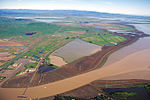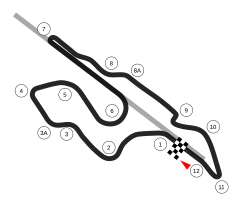KDYA
KDYA (1190 kHz), "Gospel 1190 The Light", is a commercial AM radio station owned by Salem Media Group and licensed to Vallejo, California, serving the San Francisco Bay Area. It broadcasts an urban gospel radio format, and is Northern California's only full-time urban gospel station reaching San Francisco, Sacramento, Santa Rosa and Stockton. The radio studios and offices are on Blume Drive in Richmond, California. KDYA is a daytimer, transmitting 3,000 watts, using a directional antenna. As 1190 AM is a clear channel frequency reserved for Class A KEX in Portland, Oregon, and XEWK-AM in Guadalajara, KDYA must sign off at sunset to avoid interference with these stations. The transmitter site is on Noble Road in Vallejo, on San Pablo Bay.
Excerpt from the Wikipedia article KDYA (License: CC BY-SA 3.0, Authors).KDYA
Noble Road,
Geographical coordinates (GPS) Address Nearby Places Show on map
Geographical coordinates (GPS)
| Latitude | Longitude |
|---|---|
| N 38.134166666667 ° | E -122.42555555556 ° |
Address
Noble Road
Noble Road
California, United States
Open on Google Maps







